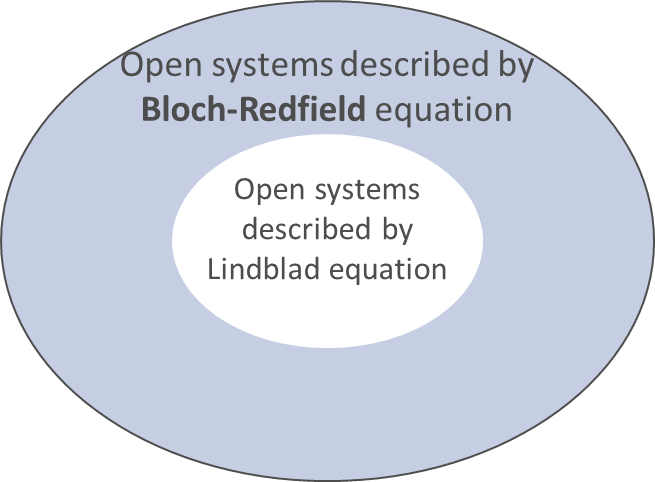Background Physics
In this chapter we describe the details of the underlying quantum mechanics, with a focus on the two master equations relevant to the study of open quantum systems:
- Lindblad master equation,
- Bloch-Redfield master equation.
The Bloch-Redfield master equation is more general than the well-known Lindblad equation. In particular, the Bloch-Redfield master equation does not make the assumption of the bath being Markovian, which allows the user to study open quantum systems as found in nature. The interaction of the system with the environment must be described by the spectral equation, and the changes of the bath need to be taken into account, making the computation more complex.

Lindblad Master Equation
The Lindblad master equation, which can be derived from the von Neumann equation, is written as follows:
where
- is the density matrix of the qubits.
- The operators offer a basis for representation of the noise operators,
- while the matrix gives (generalized) noise rates.
Assumptions
This equation holds under the assumptions that
- the coupling between the system and the bath is weak,
- and that the bath is Markovian.
This corresponds to a flat bath spectral function. It is widely used in physics and chemistry to model open quantum system effects, and has the advantage of keeping the time-evolved density matrix physical (positive semi-definite).
Its main disadvantage is that it does not capture certain effects related to structured bath spectral functions, such as energy-change-dependent transition rates in thermalization when interacting with a finite temperature bath.
Bloch-Redfield Master Equation
The Bloch-Redfield master equation, which is the master equation utilized in this software module, relaxes the above assumptions of the Lindblad equation and thus generalizes the time-local master equation to cover also cases of structured spectral functions. This allows users to study important effects, such as energy-change-dependent transition rates, when studying open quantum systems with a finite temperature bath.
The Bloch-Redfield master equation can also be derived from the von Neumann master equation using second-order perturbation theory in the interaction with the bath. NOTE: While we will not re-derive the Bloch-Redfield master equation in this document, we will provide some information on how it relates to the code in this repository.
When derived, one obtains the following equation for the density matrix in the Schrödinger picture:
with , where
- is the bath correlation function in the time domain
- and are the system coupling operators
- the subscript refers to the interaction picture transformation.
A (positive time) Fourier transformation of the bath correlation function gives the energy-dependent transition rates and energy shifts by a relation of the form . Further derivation would be required to obtain the Bloch-Redfield superoperator from the above equations, which is beyond the scope of the bath-mapper user documentation.
Please note that the Bloch-Redfield equation simplifies to the Lindblad equation in the case of a flat spectral function, , where are now constants. This means that an open quantum system described by the Lindblad master equation can also be described by the Bloch-Redfield master equation, making the latter being more general in its applications. However, the Bloch-Redfield equation does not guarantee the physicality of the time-evolved density matrix in general. In particular, it should be used with caution when applied to spectral functions with sharp changes on the scale of the system-bath couplings.